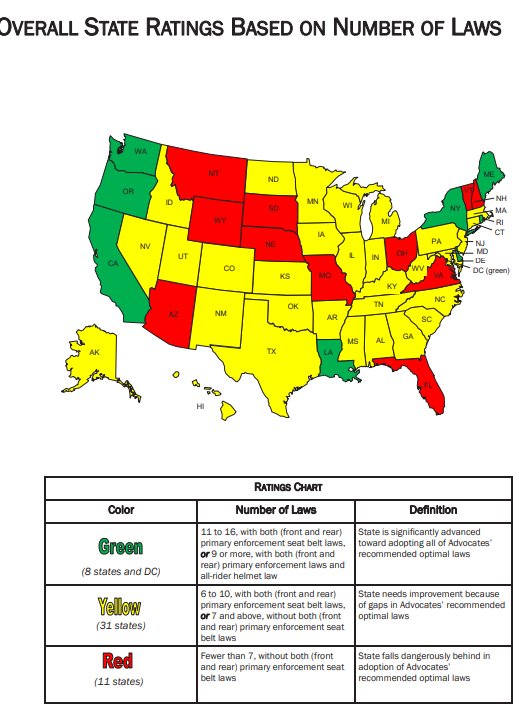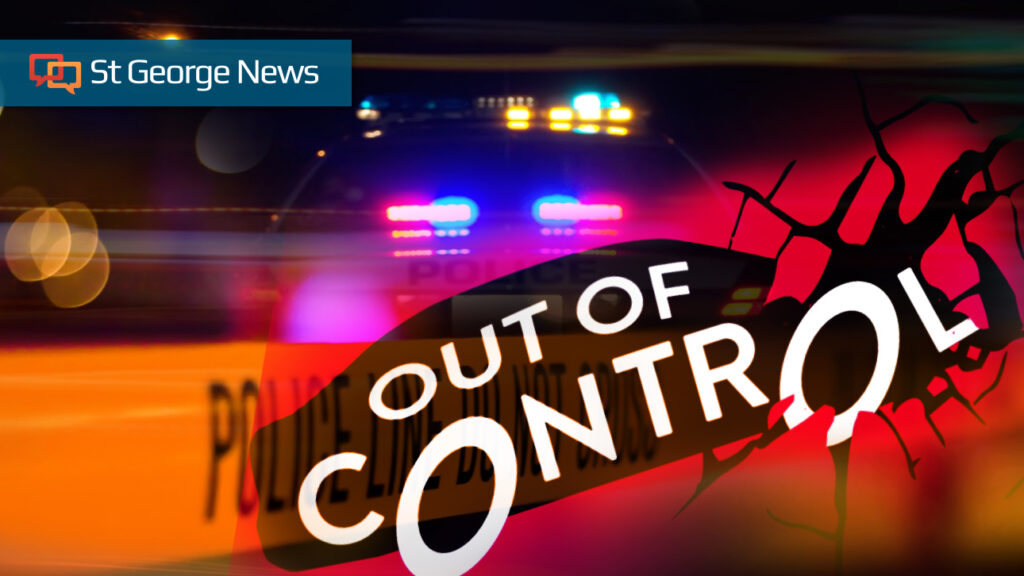
ST. GEORGE — A new report released last week revealed that many motorists are unaware of exactly how far traffic safety has spun “out of control” along the nation’s roadways and also in Southern Utah.
The 19th annual Roadmap of State Highway Safety Laws report, appropriately titled “Out of Control,” states that the number of motor vehicle crash fatalities is moving in the wrong direction and outlines 16 essential traffic safety laws demonstrated to prevent crashes, fatalities and injuries.
The report rates traffic safety laws in every state. A new poll also released by advocates demonstrates widespread public concern about dangerous roadway behaviors and a strong desire for solutions.
The analysis also revealed that in 2020, despite a decrease in vehicle miles traveled, the traffic-related death rate reached the highest level in more than 17 years.
Cathy Chase, president of Advocates for Highway Auto and Safety, said Tuesday that last year those numbers were even worse. In fact, she said, more than 20,000 people died in crashes in the first six months of 2021 – which represents an 18% increase and the highest half-year increase ever recorded in the United States.
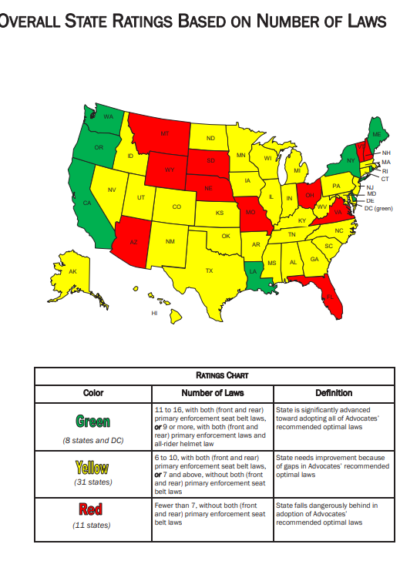
Calling the steady rise in traffic deaths “an epidemic,” the study identified three primary occupant behaviors that contributed to the spike in crash-related fatalities: speeding, driving impaired and not buckling up.
Similar trends were found across Utah. In fact, 2021 was the deadliest year in more than two decades along the state’s roadways, with more people killed last year than any other year since 2002 – a clear message that taking risks behind the wheel can have catastrophic consequences.
In 2021, despite numerous safety campaigns and enhanced enforcement efforts, 320 people died in automobile crashes compared to 281 reported in 2020 in Utah. And the trend appears to be extending into January of this year, as a string of deadly crashes have already been reported across the state.
Chase said to address this trend that appears to be spiraling upward, federal legislation and equipment upgrades have been enacted aimed at reducing the number of traffic-related deaths and injuries, one of which is the Infrastructure Investment and Jobs Act that was signed into law on Nov. 15, 2021.
The new law provides surface transportation programs and invests in the nation’s infrastructure. The legislation requires changes in new vehicle technology, including automatic emergency braking, impaired driving prevention technology, collision avoidance technologies, as well as “hot cars” detection and alert systems to protect children.
“The changes must be a floor – not a ceiling, of what achievements are needed,” Chase added.

While federal legislation and laws have a significant impact on traffic safety overall, changes made on the state level have a direct impact on driver safety, Chase said.
Moreover, she said, there are still several states across the nation that have yet to enact highway safety laws. That inaction has come at a high price, and the ripple effect is devastating, as the report clearly shows.
The combined effort to reduce the number of people killed along the nation’s highways includes safety advocates, elected officials, law enforcement and those in the medical and insurance industries that joined forces to call on states to close the lethal loopholes in the law for the purpose of reversing the deadly trend.
The study also outlined an annual roadmap report that identified the best and worst states based on the number of traffic safety laws enacted. States are rated as red, yellow or green, with red being the worst, in several different categories: occupant protection, teen driving, impaired driving, distracted driving, child occupant safety and an overall rating.
How Utah rates in terms of traffic safety

Utah received an overall yellow rating, with a red rating in one category: safety laws addressing teen driving. The rating is based on the fact that Utah has two of the six optimal requirements for the Graduated Licensing Program.
The state has implemented the passenger restriction provision and the license holding provision, but four other provisions are not required under current state law, including the minimum age requirement, nighttime driving restriction, the 50-hours of supervised driving requirement and unrestricted drivers license at the age of 18 provisions.
On the upside, the Beehive State received a green rating in two categories – impaired driving and distracted driving. As far as impaired driving is concerned, all three optimal DUI laws, including open container, child endangerment and interlock requirement, are in effect in Utah. Additionally, both distracted driving laws – the driving text restriction and the graduated teen driver’s license that also has a text restriction – have also been enacted across the state.
Utah received a yellow score in the remaining categories, meaning more than half of the safety traffic laws in those categories are in effect, which still leaves a gap in traffic safety, the report says.
To view the entire 2022 “Out of Control” report click here.
Fatality numbers drop when seat belt use goes up
The use of seat belts in passenger vehicles saves nearly 14,000 lives each year on average, Chase said, adding that if 100% of passengers age 5 and older used seat belts, an additional 2,600 more lives could be saved each year.
Estimates from 2020 indicate unrestrained passenger fatalities spiked 15%, and deaths from being ejected during a crash were up 20%. Preliminary data for 2021 only shows more of the same. Moreover, in fatal crashes, more than 80% of passengers that were fully ejected from the vehicle were killed. Less than 1% of those thrown from the vehicle were restrained.

The national report also shows that seat belt use is higher in states with primary enforcement laws compared to those with secondary enforcement laws – or those with no seat belt laws at all. Utah has enacted two occupant safety laws, including a primary front seat safety belt, as well as a rear seat safety belt requirement, earning the state a yellow rating in this category. Since Utah has no motorcycle helmet law, which is also included in this category, the state was not given a green rating.
Alan Maness, vice president of Federal Affairs and Counsel for State Farm Insurance, said the spike in fatality numbers is particularly disturbing, as is the drop in seat belt use, citing that 14,000 lives are saved each year through seat belt use.
The deaths and injuries for unrestrained occupants come at a staggering financial cost as well: more than $10 billion each year, which includes medical costs, loss of productivity and so on.
With the recent uptick in fatal numbers, along with the drop in seat belt use, Maness said, there has never been a better time to make a commitment to buckle up for every trip, every time.
Nevada Assemblywoman Shannon Bilbray-Axelrod said crashes are the leading cause of deaths among children. On average, more than 40% of those killed are not properly restrained. In 2019, more than 1,100 children under the age of 14 were killed in traffic crashes, and another 180,000 were injured.
“Children are our most vulnerable passengers,” Axelrod said, “And these deaths must stop.”
According to best practices, Axelrod said, children should remain in a rear-facing booster seat until the age of 2 and ride in a booster seat until they reach 57-inches in height. In fact, proper restrains and car seats can reduce the risk of death for infants by more than 70%, and for toddlers, those risks drop by more than 55%.
Teens and traffic-related deaths
Crashes involving young drivers, ages 15-20, resulted in more than 4,500 fatalities, including 1,800 drivers and nearly 1,000 passengers of the young driver. The remaining 1,900 killed are occupants in other vehicles, pedestrians and cyclists.
Utah saw a stark increase in the number of teens killed last year, a period in which 32 teenagers were killed in traffic crashes – up from 22 killed the previous year. This is also the category Utah received the red rating in, with three of the six recommended laws in effect.
Deadly consequences of driving impaired
More than 10,000 traffic-related fatalities involving a drunk driver are reported each year, on average. Alex Otte, national president of Mothers Against Drunk Driving, said during the conference that drunk driving is particularly deadly when children are involved.
Driving impaired with a child in the car is child abuse, Otte added.

Drunk driving continues to be a leading cause of motor vehicle crashes, and while state laws and enforcement play a role in the issue, advanced impaired driving prevention technology may also hold the key to addressing the public health problem and can save up to 9,000 lives each year if deployed.
In Utah, crashes involving impaired drivers killed 61 people last year. Utah Highway Patrol troopers also saw a spike in the amount of alcohol these drivers had on board – with an average blood alcohol level of 0.165 – more than three times the legal limit. Moreover, more than two-thirds also tested positive for drugs at the time.
Fatal crashes involving large trucks
Truck crashes continue to occur at an alarmingly high rate. In 2020, crashes involving large trucks killed nearly 5,000 people nationwide, a staggering 45% increase since 2009, Chase said, when traffic numbers were at an all-time low.
Chase said that a number of safety improvements on large trucks designed to reduce the number of crash fatalities are needed, namely, safety technologies such as automatic emergency braking systems and speed limiting devices, equipment that is already required in Europe, as well as numerous other lifesaving truck safety advances that have been delayed for years.
Also needed are the upgrades to the rear underride guard, which is a requirement on all semitractor-trailers, but federal state laws have yet to require trucks to be outfitted with side and front guards as well.
Motor vehicle crashes and mounting costs
The report also revealed there are massive financial costs associated with traffic-related crashes, a burden that many times is left to society to pay.

In fact, the report shows that crash-related costs are more than $292 billion annually, which amounts to an $877 “crash tax” paid by every person living in the U.S.
Those costs broken down include nearly $92 billion in property damage, $28.3 billion in present and future medical costs, another $93 billion in lost wages and household costs and $78.6 billion in other costs.
To illustrate how much money that total actually is, if $292 billion was broken down into $1 bills – it would weigh more than 6.4 million pounds and if one person put them in a stack, it would take more than 8,700 years to complete the stack – which would be more than 19,800 miles high – which is more than 19,730 vertical miles beyond the Earth’s atmosphere into space.
Collateral damage and crashes
“When loss of life, pain and decreased quality of life are added to economic costs,” Chase said, “the actual cost is nearly $1 trillion.”
More than any monetary costs and property damage is the human cost, Chase added, and the bottom line is that every single day on average, 100 people get into their cars to run errands, commute to work or take family vacations but they never return home.
Photo Gallery
Infographic depicts traffic safety laws and improvements to address riders on all-terrain vehicles as part of a traffic safety report released during a press conference on Jan. 18, 2022 | Image courtesy of Advocates for Highway Auto and Cathy Chase, President of Advocates for Highway and Auto Safety chaired a press conference held to release the 2022 traffic safety report on Jan. 18, 2022 | Photo courtesy of Advocates for Highway Auto and Safety, St. George News Infographic depicts depicting the dangers to children when a driver is impaired as part of a traffic safety report released during a press conference on Jan. 18, 2022 | Image courtesy of Advocates for Highway Auto and Infographic depicts traffic safety laws and improvements to address dangers of distracted driving as part of a traffic safety report released during a press conference on Jan. 18, 2022 | Image courtesy of Advocates for Highway Auto and Infographic depicts traffic safety laws and improvements to address dangers of impaired driving as part of a traffic safety report released during a press conference on Jan. 18, 2022 | Image courtesy of Advocates for Highway Auto and Infographic depicts traffic safety laws and improvements to address dangers of impaired driving as part of a traffic safety report released during a press conference on Jan. 18, 2022 | Image courtesy of Advocates for Highway Auto and Safety, St. George News Infographic depicts the mounting costs associated with traffic crashes and fatalities as part of a traffic safety report released during a press conference on Jan. 18, 2022 | Image courtesy of Advocates for Highway Auto and Safety, St. George News Infographic depicts how each state is rated in terms of the number of safety laws enacted to address teen driving as part of a traffic safety report released during a press conference on Jan. 18, 2022 | Image courtesy of Advocates for Highway Auto and Safety, St. George News Infographic depicting safety laws enacted in a partial list of states, including Utah, that was released in a safety report during a press conference on Jan. 18, 2022 | Image courtesy of Advocates for Highway Auto and Safety, St. George News Infographic depicts how each state is rated in terms of the number of safety laws enacted in each state as part of a traffic safety report released during a press conference on Jan. 18, 2022 | Image courtesy of Advocates for Highway Auto and Safety, St. George News Infographic depicting how seat belt enforcement and primary seat belt laws reduce fatalities | Image courtesy of Advocates for Highway Auto and Safety, St. George News Infographic depicts the use of child safety seats and booster seats to reduce traffic deaths as part of a traffic safety report released during a press conference on Jan. 18, 2022 | Image courtesy of Advocates for Highway Auto and Safety, St. George News Infographic depicts how each state is rated in terms of the number of safety laws enacted to address child occupant safety part of a traffic safety report released during a press conference on Jan. 18, 2022 | Image courtesy of Advocates for Highway Auto and Safety, St. George News Infographic depicts how each state is rated in terms of the number of safety laws enacted to address impaired driving as part of a traffic safety report released during a press conference on Jan. 18, 2022 | Image courtesy of Advocates for Highway Auto and Safety, St. George News 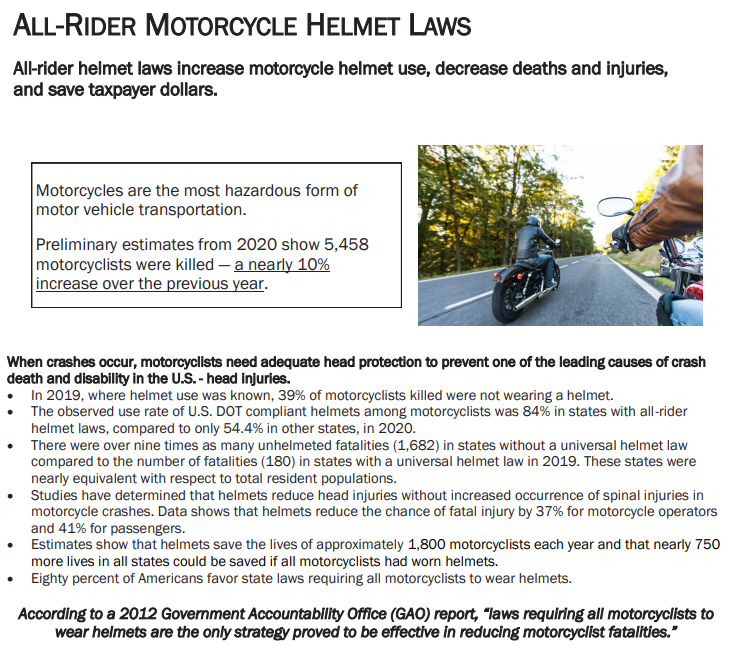
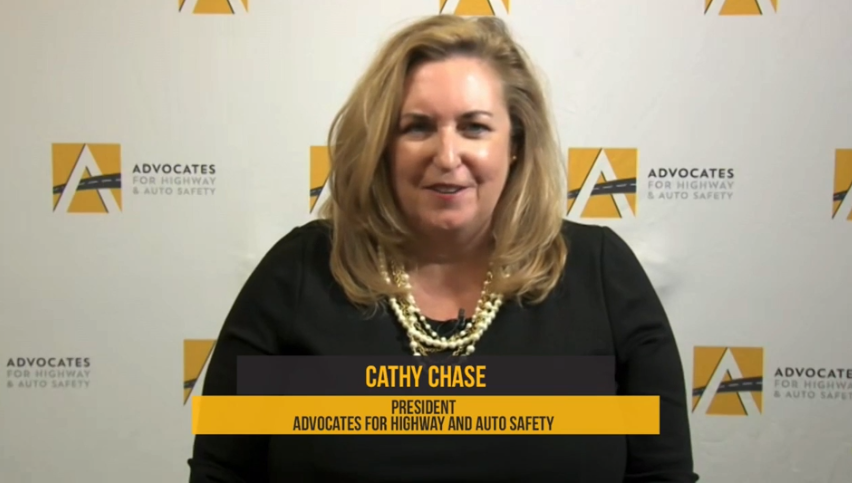
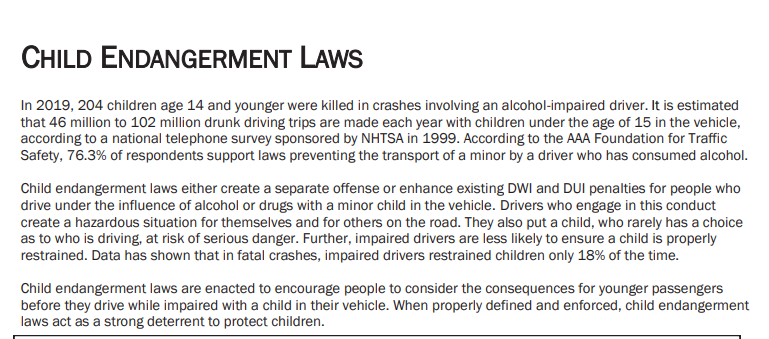
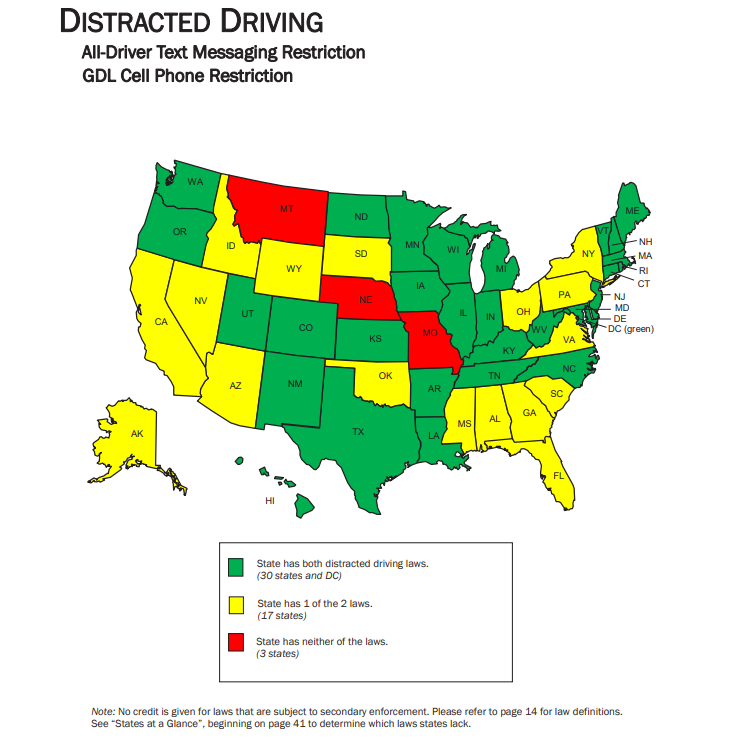
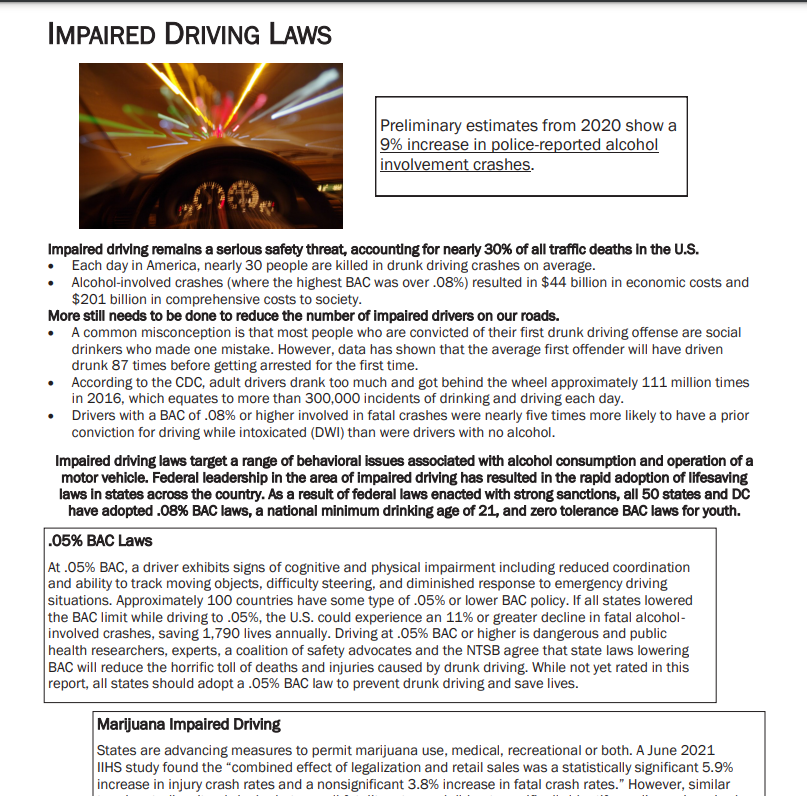
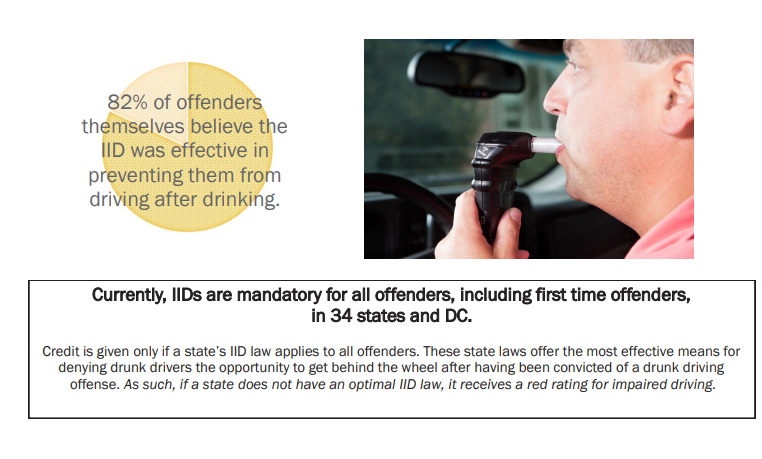
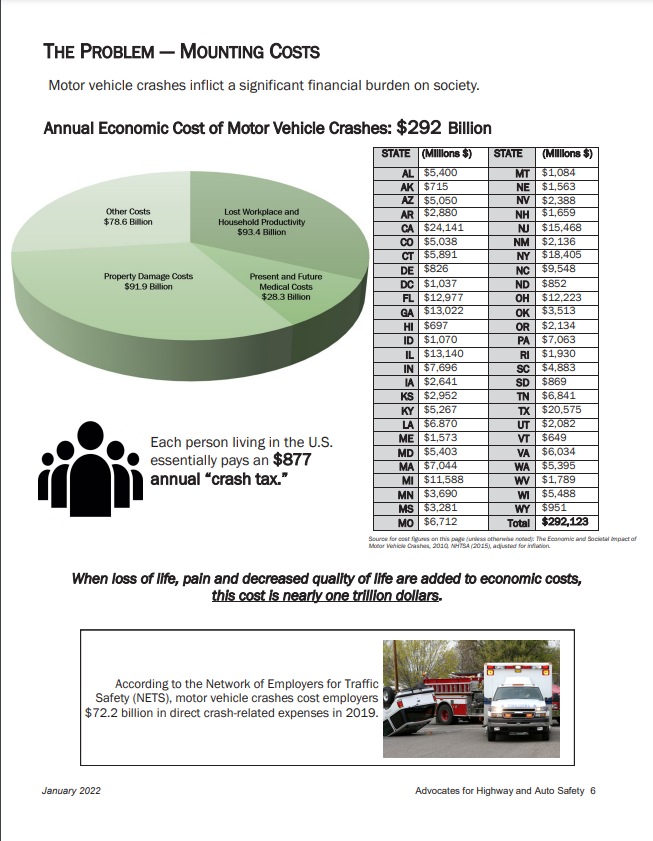
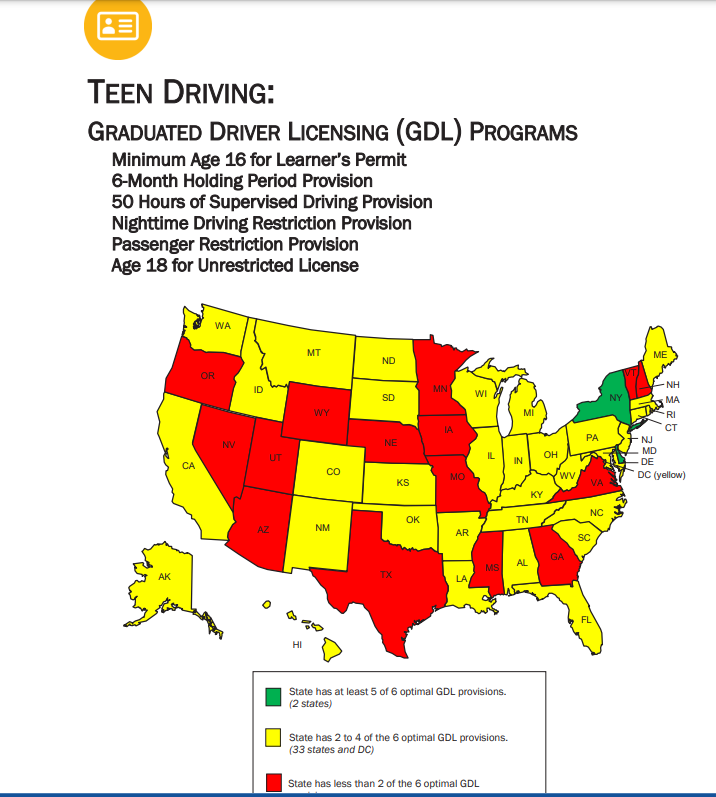
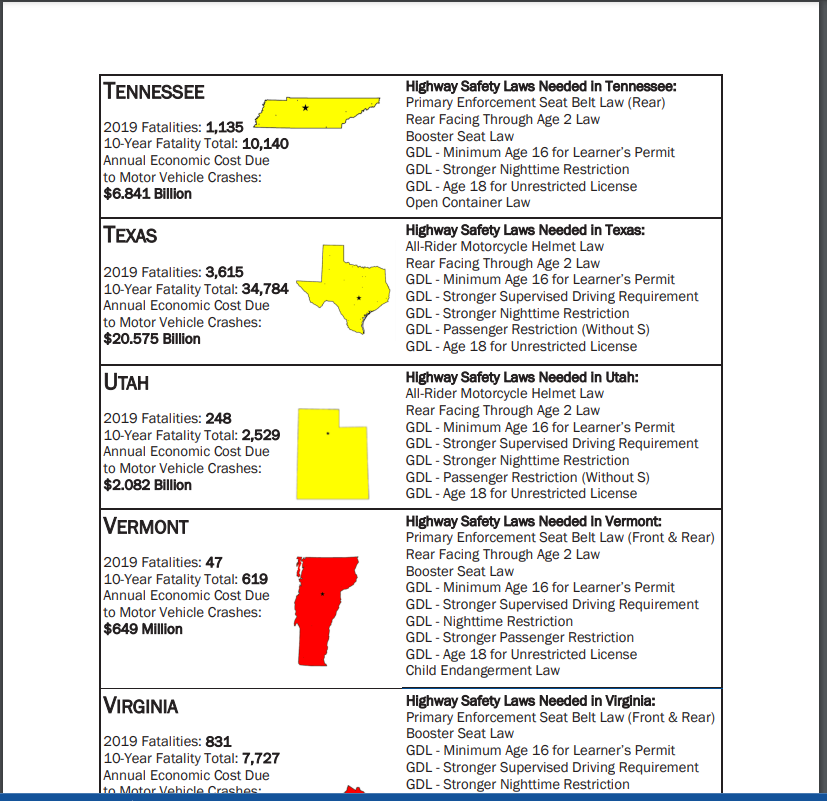
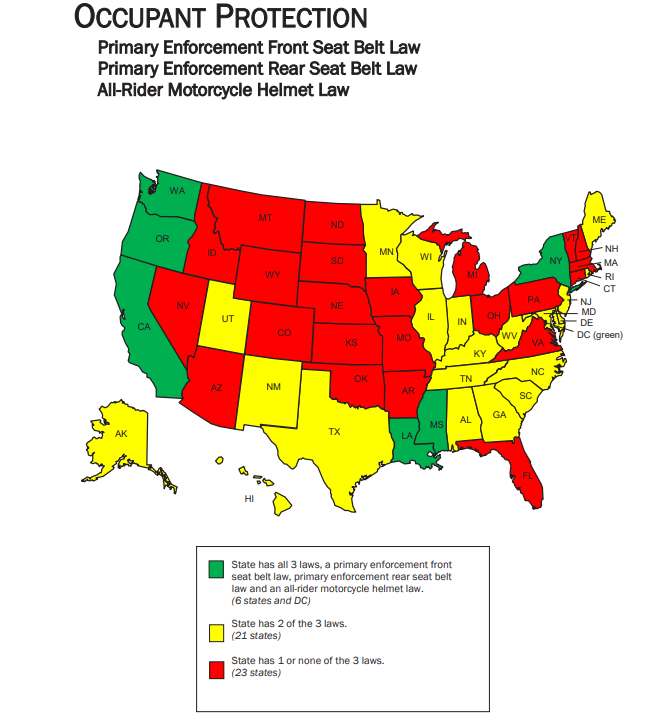
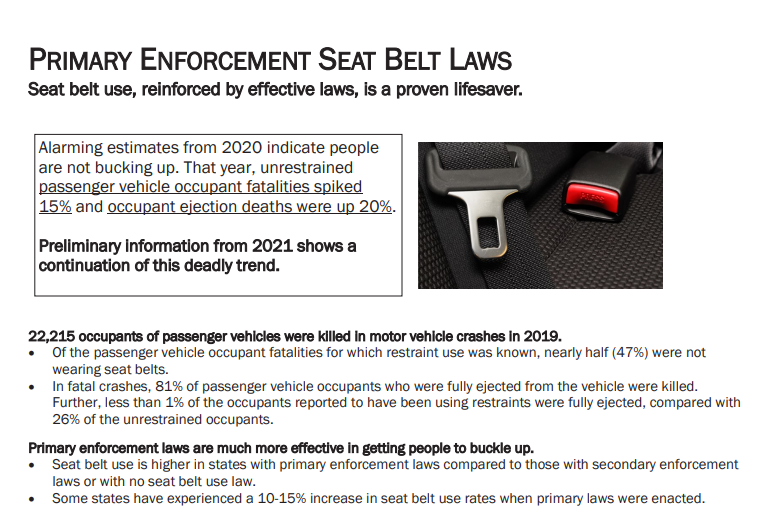
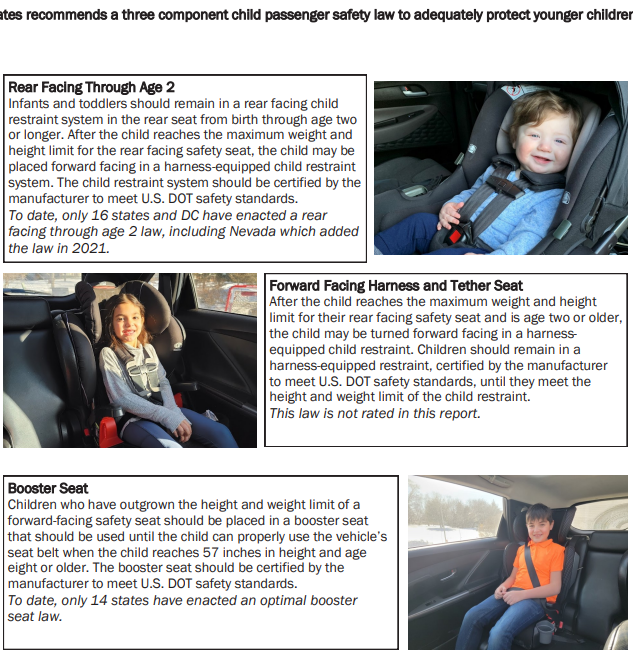
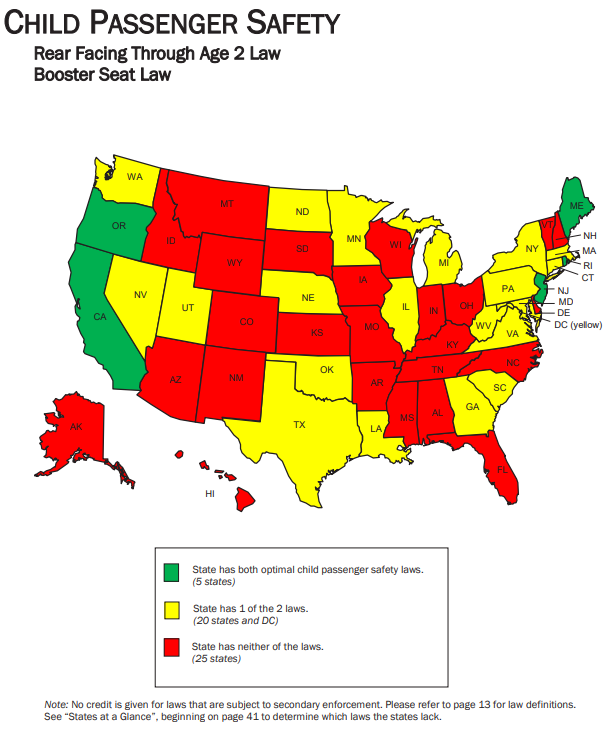
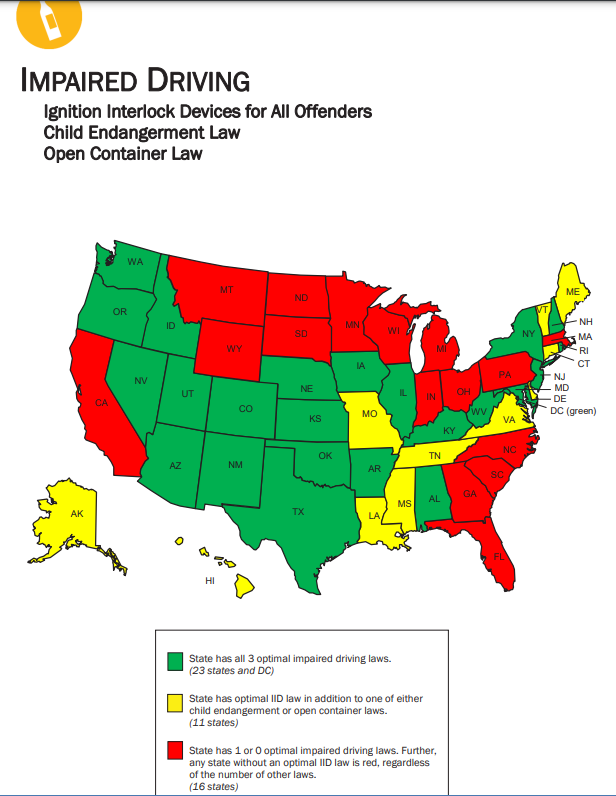
Copyright St. George News, SaintGeorgeUtah.com LLC, 2022, all rights reserved.
